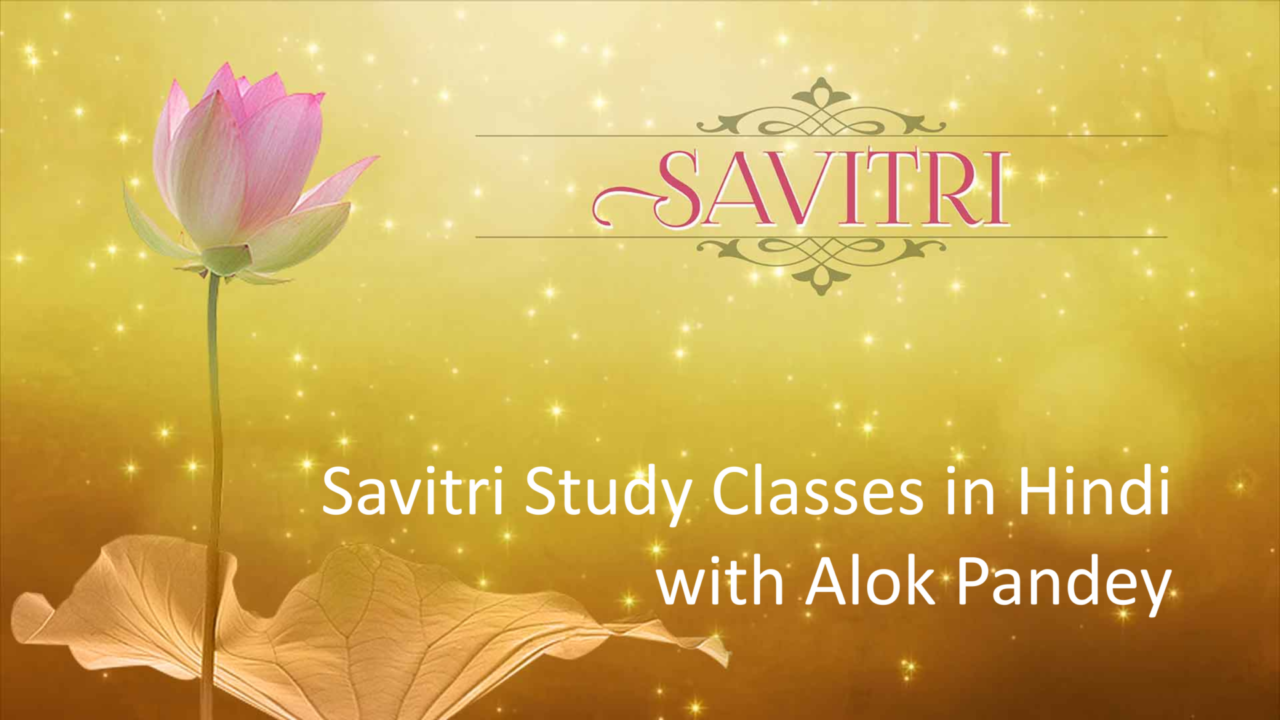Savitri Class in Hindi with Alok Pandey
Savitri Book Five: The Book of Love, Canto Three: Satyavan and Savitri
Satyavan, the human soul, is trained in the school of Nature. He has learnt the deep secrets of life by a study of nature. In this schooling of nature, he is also given moments of silence when he comes in contact with his own self. But what he needs is the bridge to connect the pouter and the inner. He has not yet discovered the key to link the Spirit and Matter, his Soul and Nature, the inmost Self and World. Yet a strange prescience intuitively tells him that now he shall be able to bridge the gulf since She has come, the World-Mother wearing the garb of the princess Savitri.
Before Fate led me into this emerald world,
Aroused by some foreshadowing touch within,
An early prescience in my mind approached
The great dumb animal consciousness of earth
Now grown so close to me who have left old pomps
To live in this grandiose murmur dim and vast.
Already I met her in my spirit’s dream.
As if to a deeper country of the soul
Transposing the vivid imagery of earth,
Through an inner seeing and sense a wakening came.
A visioned spell pursued my boyhood’s hours,
All things the eye had caught in coloured lines
Were seen anew through the interpreting mind
And in the shape it sought to seize the soul.
An early child-god took my hand that held,
Moved, guided by the seeking of his touch,
Bright forms and hues which fled across his sight;
Limned upon page and stone they spoke to men.
High beauty’s visitants my intimates were.
The neighing pride of rapid life that roams
Wind-maned through our pastures, on my seeing mood
Cast shapes of swiftness; trooping spotted deer
Against the vesper sky became a song
Of evening to the silence of my soul.
I caught for some eternal eye the sudden
King-fisher flashing to a darkling pool;
A slow swan silvering the azure lake,
A shape of magic whiteness, sailed through dream;
Leaves trembling with the passion of the wind,
Pranked butterflies, the conscious flowers of air,
And wandering wings in blue infinity
Lived on the tablets of my inner sight;
Mountains and trees stood there like thoughts from God.
The brilliant long-bills in their vivid dress,
The peacock scattering on the breeze his moons
Painted my memory like a frescoed wall.
I carved my vision out of wood and stone;
I caught the echoes of a word supreme
And metred the rhythm-beats of infinity
And listened through music for the eternal Voice.I felt a covert touch, I heard a call,
But could not clasp the body of my God
Or hold between my hands the World-Mother’s feet.
In men I met strange portions of a Self
That sought for fragments and in fragments lived:
Each lived in himself and for himself alone
And with the rest joined only fleeting ties;
Each passioned over his surface joy and grief,
Nor saw the Eternal in his secret house.I conversed with Nature, mused with the changeless stars,
God’s watch-fires burning in the ignorant Night,
And saw upon her mighty visage fall
A ray prophetic of the Eternal’s sun.
I sat with the forest sages in their trance:
There poured awakening streams of diamond light,
I glimpsed the presence of the One in all.
But still there lacked the last transcendent power
And Matter still slept empty of its Lord.
The Spirit was saved, the body lost and mute
Lived still with Death and ancient Ignorance;
The Inconscient was its base, the Void its fate.But thou hast come and all will surely change:
I shall feel the World-Mother in thy golden limbs
And hear her wisdom in thy sacred voice.
The child of the Void shall be reborn in God,
My Matter shall evade the Inconscient’s trance.
My body like my spirit shall be free.
It shall escape from Death and Ignorance.”[Savitri: 404 – 406]
(line breaks are added to emphasize separate movements)




